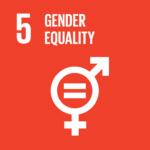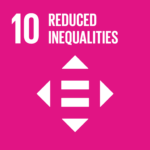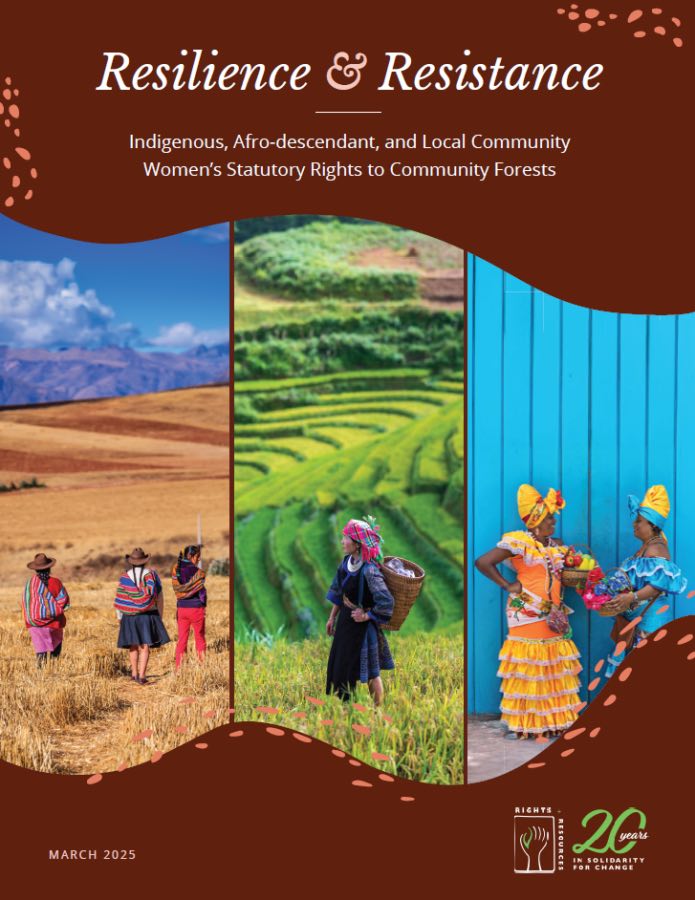Unequal ground: Released by the Rights and Resources Initiative (RRI) at a pivotal moment in the global conversation on land rights and gender justice, the report analyzed laws and policies in 35 countries across Latin America, Africa, and Asia.
March 2025 — A sweeping new analysis of forest and land tenure laws has found that women across the Global South continue to face serious legal and structural barriers in securing rights to land, forest, and natural resources — despite constitutional commitments to gender equality and decades of international agreements
RELEVANT SUSTAINABLE GOALS


Released by the Rights and Resources Initiative (RRI) at a pivotal moment in the global conversation on land rights and gender justice, the report analyzed laws and policies in 35 countries across Latin America, Africa, and Asia. It found that protections for women — particularly those in Indigenous, Afro-descendant, and local communities — have remained largely stagnant since the group’s 2017 review.
Even where progress was expected, such as with the enactment of new legislation, researchers found what they described as a “gender-blind” approach. In some cases, newly passed laws offer fewer protections than those they replaced.
Gaps in Law and Practice Persist Across Regions
Although 34 of the 35 countries analyzed constitutionally recognize women’s equality and property rights, that recognition rarely translates into practice when it comes to forests and communal land. According to the report:
- Only 11 countries guarantee women the right to inherit property when a family member dies without a will.
- Just 2% of legal frameworks provide adequate protections for women’s voting rights within communities.
- Only 5% of frameworks ensure fair access to community leadership roles.
- 13% recognize women’s inheritance rights within community settings.
These figures have changed little since RRI’s last assessment nearly a decade ago — a sobering reality as the 2030 deadline for achieving the United Nations Sustainable Development Goals (SDGs) draws near. Not a single gender equality target, including those related to land ownership, is currently on track.
Legal Recognition Lags Despite Global Commitments
All 35 countries reviewed have ratified the Convention on the Elimination of All Forms of Discrimination against Women (CEDAW) and adopted the Beijing Declaration and Platform for Action, global benchmarks for advancing women’s rights. But RRI’s report makes clear that these commitments have not been matched by implementation on the ground.
“Despite advancements in international law and national legislative reforms, tenure rights of Indigenous, Afro-descendant, and local community women remain inadequately recognized,” said Chloe Ginsberg, Associate Director of RRI’s tenure-track program.
Of particular concern is the backsliding observed in some newer laws, which fail to account for gender-specific vulnerabilities or even weaken protections previously enshrined in older legal codes.
Why Women’s Land Rights Matter Beyond Equity
For Ginsberg and the team behind the report, this is not just a matter of equity—it’s a matter of sustainability and survival. “When community women have secure rights to their lands and resources, they’re much better positioned to advance the sustainability and conservation objectives of their communities,” she said.
Women in Indigenous and local communities often serve as primary stewards of intergenerational knowledge, guiding sustainable practices in agriculture, water management, and biodiversity conservation. Yet their legal marginalization undermines not only their agency, but the resilience of entire communities in the face of environmental and economic shocks.
The report calls for urgent gender-transformative action by governments, donors, and civil society. Among the recommendations:
- Explicit legal recognition of women’s voting, inheritance, and leadership rights within community land governance structures.
- Development of laws that go beyond gender neutrality to actively protect and promote women’s access to resources.
- Stronger enforcement mechanisms and resources to implement laws where they exist.
The research, which reviewed over 800 laws, including more than 200 enacted or revised since 2017, brings new countries into focus for the first time — including Ecuador, Ghana, Lao PDR, Madagascar, and Nicaragua — expanding the scope of understanding across a region that encompasses 42% of the world’s forest area.
With just five years left to meet the SDGs, the findings serve as a critical reminder: legal equality on paper is not enough. Without structural change and targeted support for Indigenous, Afro-descendant, and local women, global efforts to promote sustainability, equity, and resilience will fall short.
“We’re not just talking about the rights of individual women,” Ginsberg said. “We’re talking about the health and future of entire ecosystems and economies.”
In the race to meet 2030’s promises, securing women’s land rights may prove to be one of the most transformative steps the world can take.
You may also be interested in :
Vietnam Leads ASEAN In Impact Investment With Game Changing ‘Orange Index’ Score of 50




